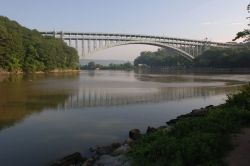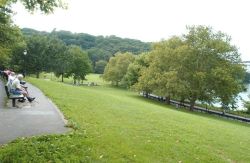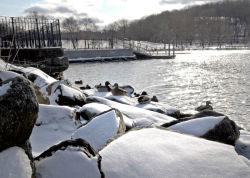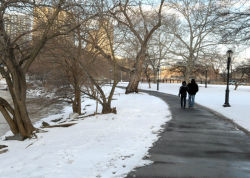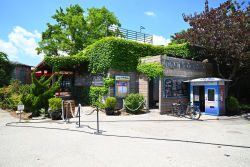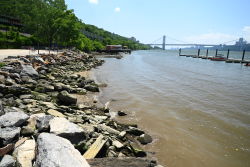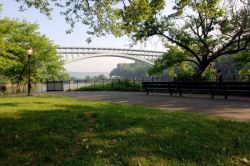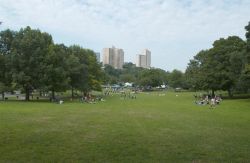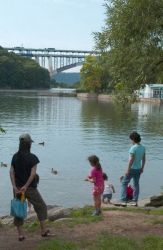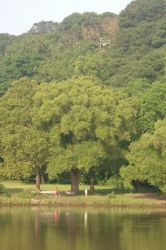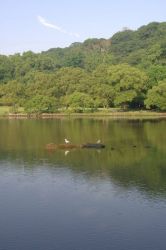Inwood Hill Park
Inwood Hill Park
Inwood Hill Park contains the last natural forest and salt marsh in Manhattan. It is unclear how the park received its present name. Before becoming parkland in 1916, it was known during the Colonial and post-Revolutionary War period as Cock or Cox Hill. The name could be a variant of the Native American name for the area, Shorakapok, meaning either “the wading place,” “the edge of the river,” or “the place between the ridges.”
Human activity has been present in Inwood Hill Park from prehistoric times. Through the 17th century, Native Americans known as the Lenape (Delawares) inhabited the area. There is evidence of a main encampment along the eastern edge of the park. The Lenape relied on both the Hudson and Harlem Rivers as sources for food. Artifacts and the remains of old campfires were found in Inwood’s rock shelters, suggesting their use for shelter and temporary living quarters.
In 1954 the Peter Minuit Post of the American Legion dedicated a plaque at the southwest corner of the ballfield (at 214th Street) to mark the location of a historic tree and a legendary real estate transaction. A living link with the local Indians who resided in the area, a magnificent tulip tree stood and grew on that site for 280 years until its death in 1938. The marker also honors Peter Minuit’s reputed purchase of Manhattan from the Lenape in 1626. The celebrated sale has also been linked to sites in Lower Manhattan.
In the 17th and 18th centuries, colonists from Europe settled and farmed here. During the Revolutionary War, American forces built a five-sided earthwork fort (known as Fort Cock or Fort Cox) in the northwestern corner of the park. It fell to British and Hessian troops in November 1776 and was held until the war ended in 1783. After the Revolutionary War, families returned to the area to resume farming.
In the 1800s much of present-day Inwood Hill Park contained country homes and philanthropic institutions. There was a charity house for women, and a free public library (later the Dyckman Institute) was formed. The Straus family (who owned Macy’s) enjoyed a country estate in Inwood; its foundation is still present. Isidor and Ida Straus lost their lives on the S.S. Titanic’s maiden voyage. When the Department of Parks bought land for the park in 1916, the salt marsh was saved and landscaped; a portion of the marsh was later landfilled. The buildings on the property were demolished. During the Depression the City employed WPA workers to build many of the roads and trails of Inwood Hill Park.
In 1992 Council Member Stanley E. Michels introduced legislation, which was enacted, to name the natural areas of Inwood Hill Park “Shorakapok” in honor of the Lenape who once resided here. In 1995 the Inwood Hill Park Urban Ecology Center was opened. It provides information to the public about the natural and cultural history of this beautiful park. Today the Urban Park Rangers work with school children on restoration projects to improve the health and appearance of the park. Complementing the work of the Rangers is that of dozens of Inwood “Vols” (Volunteers), who assist with park restoration and beautification.
Check out your park's Vital Signs
Clean & Safe
Green & Resilient
Empowered & Engaged Users
Share your feedback or learn more about how this park is part of a
Vital Park System

Know Before You Go


